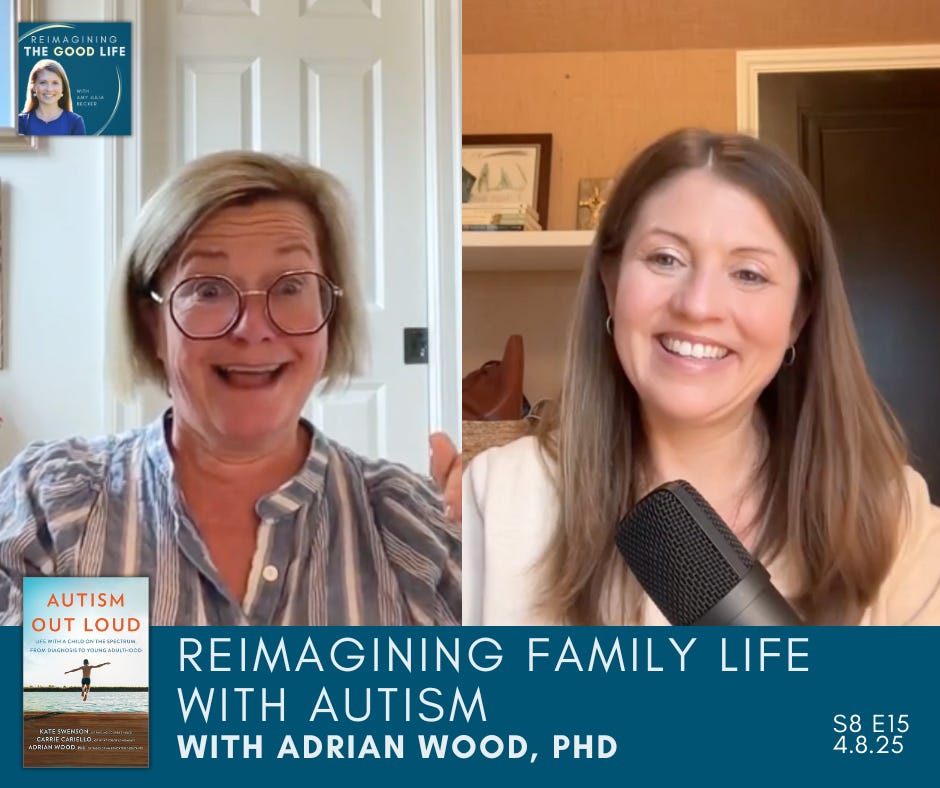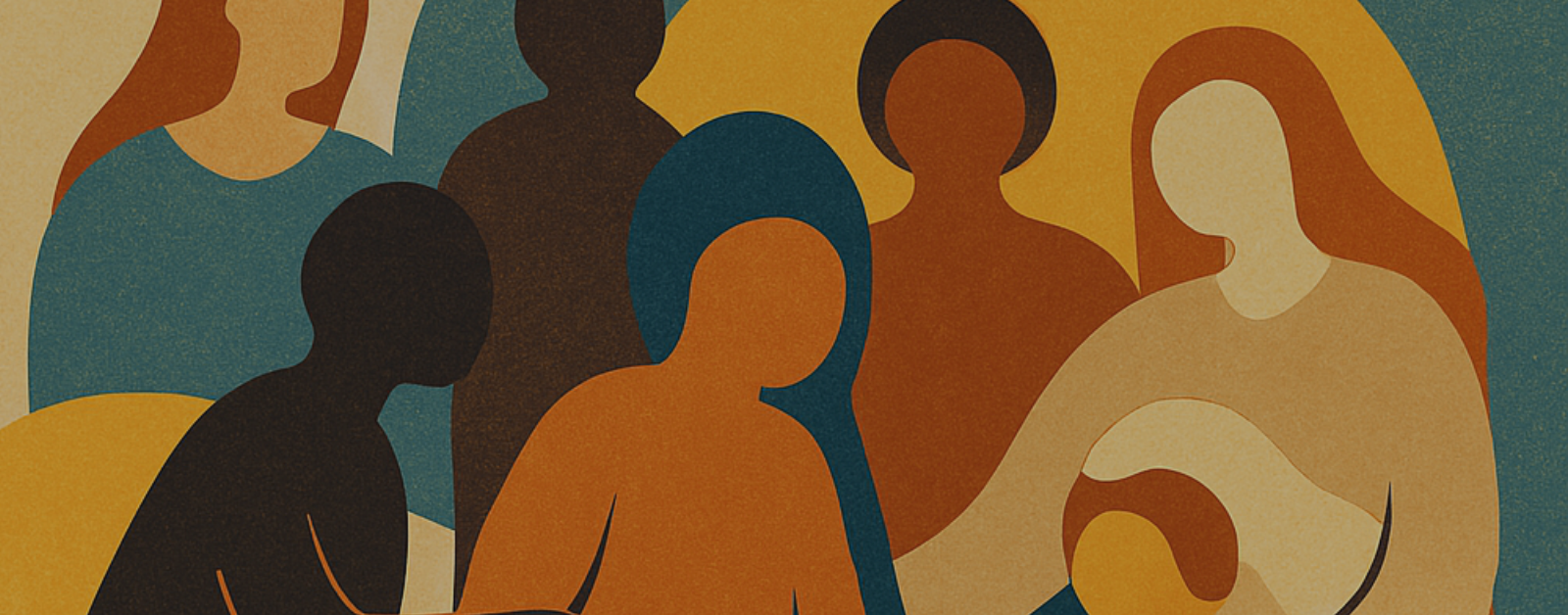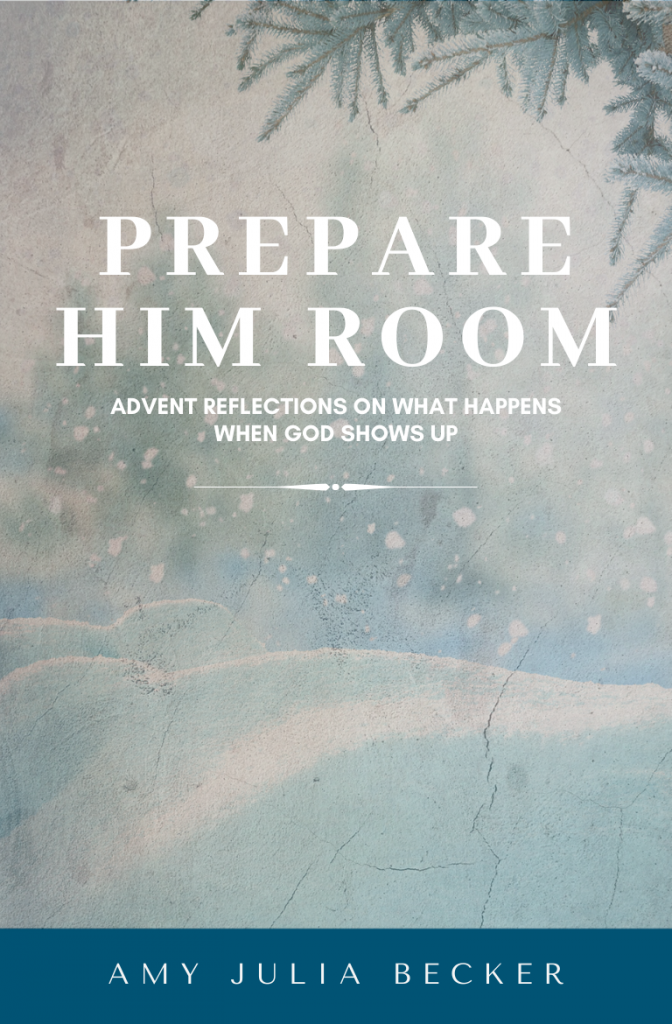There’s something special about connecting with a person who not only lives in the small town where you grew up, but also shares a similar parenting journey. That’s how I feel about Adrian Wood.
Adrian has a PhD in Educational Research and is the creator of the vlog Tales of an Educated Debutante and co-author of Autism Out Loud—and she lives in my childhood town. We’ve connected online for years, and this week she joined me on the podcast to discuss community, belonging, disability, and how we have grown up with our children.

LISTEN OR WATCH: Apple 🎧 | Spotify 🎧 | YouTube 🎬
We also share some of the ways we honor the good, the hard, and everything in between:
Honor needs and limitations, for yourself and others.
Being human means living with limitations—that’s part of the human experience. Adrian points out,
“You can’t have it all. You can’t do it all. You can’t be it all.”
We have to make space to live within our limits as humans. Having a child with obvious limitations has invited us to be much gentler with our own limitations, rather than pretending they don’t exist. Sometimes, that means letting go of our own discomfort or the urge to be efficient, and when we do, it opens the door to human connection that expands who we are. Something deeply beautiful grows when we honor each other and are patient with each other—and with ourselves—instead of forcing our way through the world.
Change the narrative—share what’s good and what’s hard.
Adrian grew up in a small town and attended a private school. She didn’t know anyone with a disability, so it’s unsurprising that, as an adult, she looked at families growing up alongside disability with a mix of awe and pity, not realizing that both emotions were rooted in a narrow understanding of disability. “I wish I had known—disabilities aren’t bad,” she says. “I think everybody has something in their life that is not what they planned. But it’s a good life. I wouldn’t trade it.” Adrian shares her family’s story—the good and the hard—to offer a narrative that goes beyond toxic positivity or tragedy.
Recognize that being present in a local community is important, and can be difficult.
Having a disability and being present in the local community isn’t always easy. A few weeks ago, Adrian was grocery shopping with her son Amos, who is in the 4th grade and on the autism spectrum. As Amos roamed the aisles and rolled on the floor, a person in the store made assumptions about Adrian’s parenting and called the police. Adrian says, “Sometimes you’re going to get burned. It’s not going to be easy, but it’s important [to be present in the community].” Surprisingly, that phone call was not the end of the story. What started as an uncomfortable encounter in the grocery store turned into a series of meaningful conversations with the person who had called the police. Perspectives changed.
Last week, Adrian wrote on social media:
“You represent the world. You’re going to be at a game or the grocery store or a school play or maybe even at church and you’re going to see a person with autism. Maybe an adult or child who is not following the rules—maybe being too loud or rolling on the floor or struggling to hold it together.”
In that moment, Adrian hopes stories like this will help you to smile rather than judge. Our stories—of both the good and the hard—can begin to reshape our world into communities that say…
“Welcome! We’re here together.”

Please listen to (or watch) and share this episode. And I’d love to hear from you. How did you think about disability when you were growing up? Has that changed at all? If so, why and how?
Let’s stay in touch. Subscribe to my newsletter to receive weekly reflections that challenge assumptions about the good life, proclaim the inherent belovedness of every human being, and envision a world of belonging where everyone matters. Follow me on Facebook, Instagram, and YouTube and subscribe to my Reimagining the Good Life podcast for conversations with guests centered around disability, faith, and culture.



